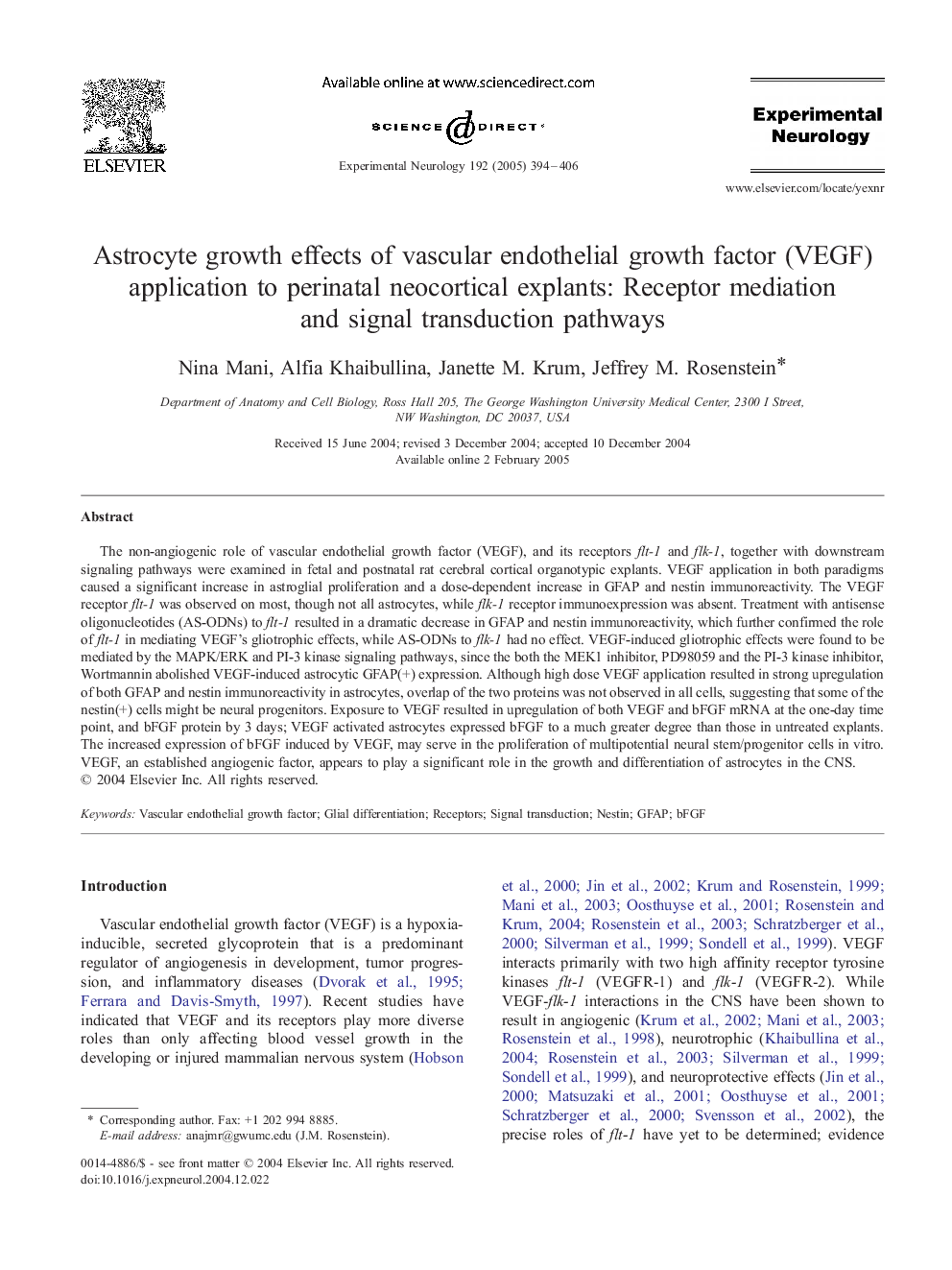| Article ID | Journal | Published Year | Pages | File Type |
|---|---|---|---|---|
| 9192023 | Experimental Neurology | 2005 | 13 Pages |
Abstract
The non-angiogenic role of vascular endothelial growth factor (VEGF), and its receptors flt-1 and flk-1, together with downstream signaling pathways were examined in fetal and postnatal rat cerebral cortical organotypic explants. VEGF application in both paradigms caused a significant increase in astroglial proliferation and a dose-dependent increase in GFAP and nestin immunoreactivity. The VEGF receptor flt-1 was observed on most, though not all astrocytes, while flk-1 receptor immunoexpression was absent. Treatment with antisense oligonucleotides (AS-ODNs) to flt-1 resulted in a dramatic decrease in GFAP and nestin immunoreactivity, which further confirmed the role of flt-1 in mediating VEGF's gliotrophic effects, while AS-ODNs to flk-1 had no effect. VEGF-induced gliotrophic effects were found to be mediated by the MAPK/ERK and PI-3 kinase signaling pathways, since the both the MEK1 inhibitor, PD98059 and the PI-3 kinase inhibitor, Wortmannin abolished VEGF-induced astrocytic GFAP(+) expression. Although high dose VEGF application resulted in strong upregulation of both GFAP and nestin immunoreactivity in astrocytes, overlap of the two proteins was not observed in all cells, suggesting that some of the nestin(+) cells might be neural progenitors. Exposure to VEGF resulted in upregulation of both VEGF and bFGF mRNA at the one-day time point, and bFGF protein by 3 days; VEGF activated astrocytes expressed bFGF to a much greater degree than those in untreated explants. The increased expression of bFGF induced by VEGF, may serve in the proliferation of multipotential neural stem/progenitor cells in vitro. VEGF, an established angiogenic factor, appears to play a significant role in the growth and differentiation of astrocytes in the CNS.
Keywords
Related Topics
Life Sciences
Neuroscience
Neurology
Authors
Nina Mani, Alfia Khaibullina, Janette M. Krum, Jeffrey M. Rosenstein,
